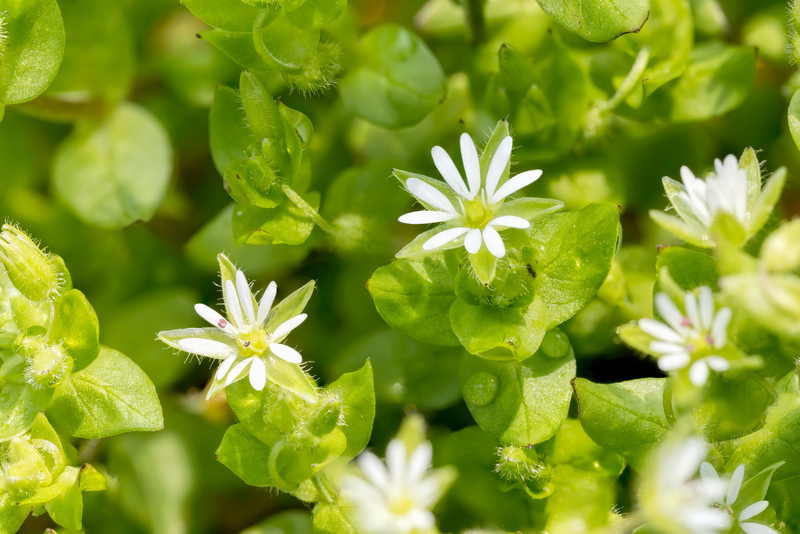Innovative Waste Recycling for Flourishing Soil Ecosystems
Posted on 18/08/2025
Innovative Waste Recycling for Flourishing Soil Ecosystems: Transforming Waste into Life
Discover how cutting-edge approaches to waste recycling are revolutionizing soil health and boosting agriculture, biodiversity, and environmental resilience. Explore the science, technology, and ecological benefits of innovative recycling methods for thriving soil ecosystems.

Understanding the Importance of Healthy Soil Ecosystems
Soil is much more than just a growing medium; it is a living, dynamic ecosystem, teeming with microorganisms, invertebrates, and organic processes that sustain terrestrial life. Healthy soils cycle nutrients, regulate water, store carbon, and support plant growth. Unfortunately, soil degradation and loss of fertility due to intensive agriculture, pollution, and poor waste management threaten global food security and biodiversity.
Recycling organic and inorganic waste in novel, sustainable ways can rejuvenate soils, reduce environmental pollution, and close nutrient cycles. With the planet facing ever-growing waste generation and soil exhaustion, innovative waste recycling for soil ecosystems has become a powerful tool for ecological restoration and sustainable agriculture.
Why is Recycling for Flourishing Soil Ecosystems Essential?
- Climate Change Mitigation: Healthy soils absorb and store atmospheric carbon dioxide, helping fight global warming.
- Food Security: Nutrient-rich soils enhance crop yields and quality, ensuring reliable harvests.
- Water Retention: Organic matter from recycled waste improves soil structure, preventing runoff and drought stress.
- Reduced Pollution: Sustainable waste recycling diverts plastics, metals, and hazardous substances from landfills and waterways.
- Biodiversity Boost: Flourishing soil ecosystems support countless micro and macroorganisms, fostering ecological balance.
The Science Behind Innovative Waste Recycling for Soil Health
How Does Waste Recycling Benefit Soil Ecosystems?
Innovative waste recycling methods deliver essential nutrients, organic carbon, and beneficial microbes back to the soil. Instead of treating waste as mere trash, these techniques convert it into valuable resources that sustain and energize soil life. From composting food scraps to repurposing industrial byproducts, modern approaches are transforming global agriculture practices.
- Organic Waste Conversion: Composting, vermicomposting, and biochar production enrich soils with humus, nutrients, and micro-life.
- Agro-industrial Waste Utilization: Processing crop residues, distillery spent grain, or molasses produces soil amendments and organic fertilizers.
- Bioremediation: Harnessing specific plants or microbes to break down hazardous compounds in contaminated soils.
- Plastics & E-Waste Recycling: Advancements in biodegradable plastics and the safe reclamation of electronics reduce toxic inputs to soil ecosystems.
Key Technologies Leading the Way in Soil-Centric Waste Recycling
Let's explore some innovative technologies transforming the landscape of waste recycling for soil health enhancement:
- Advanced Composting Systems: Modern composting innovations, such as in-vessel and aerated static pile systems, accelerate the decomposition of organic waste, producing high-quality, pathogen-free compost. These systems optimize oxygen, moisture, and temperature, resulting in compost that reinvigorates soil structure and microbiology.
- Vermicomposting Innovations: Specialized earthworm species, such as Eisenia fetida (red wigglers), are used to convert food scraps, paper, and agricultural waste into nutrient-dense castings. Cutting-edge worm farms use temperature controls and continuous-flow reactors for year-round productivity.
- Biochar Production: Biochar, a porous form of carbon created from pyrolyzing organic matter, is a game-changer in soil amendment. It sequesters carbon, boosts soil fertility, and improves water retention. Novel pyrolysis reactors make large-scale biochar deployment possible, even at the farm level.
- Anaerobic Digestion: Organic waste (like manure and food scraps) is broken down by microbes in the absence of oxygen, producing biogas and nutrient-rich digestate. The digestate serves as an excellent organic fertilizer, closing the nutrient cycle.
- Phytoremediation: Select crops, such as sunflowers and willows, are grown on contaminated soils to extract heavy metals and toxins. Harvested biomass is then processed, and the clean soil is restored for agriculture.
- Plastic and E-Waste to Soil-Friendly Products: Innovations like bioplastics (made from food waste or crop residues) and safe metallurgical extraction from e-waste ensure that hazardous materials are removed or converted into reusable forms before they can harm soil health.
Modern Approaches to Recycling Different Waste Streams for Soil Ecosystem Benefit
1. Food Waste Recycling for Soil Regeneration
Globally, billions of tons of food waste are generated annually. Traditionally, this food ends up in landfills, producing greenhouse gases and leachate. Through innovative composting and vermicomposting, food waste becomes a potent soil amendment, rich in macro- and micronutrients, humic substances, and beneficial bacteria.
- Community-Scale Composting: Urban neighborhoods are setting up shared compost hubs, turning kitchen scraps into garden gold.
- Black Soldier Fly Larvae: These insects convert food waste into high-protein feed and nutrient-rich frass (insect manure), which rebuilds soil fertility.
2. Recycling Agricultural Residues
Crop residues, such as corn stover, rice husks, and wheat straw, are often burnt, polluting air and soil. Innovative recycling transforms these into valuable soil conditioners:
- Biochar Production: Rice husks and stalks are pyrolyzed to create biochar, enhancing water retention and microbial activity.
- Soil Mulching: Shredded residues are spread on fields, reducing erosion, maintaining moisture, and nurturing soil microfauna.
3. Industrial and Manure Waste for Circular Soil Nutrition
Livestock manure and organic industrial by-products can pollute water if unmanaged. Modern digestion and composting turn these materials into slow-release fertilizers and soil structure enhancers, supporting sustainable, circular nutrient flows.
4. Urban Organic Waste Integration
Cities generate enormous organic waste from landscaping, food services, and households. Municipal compost facilities use conveyor sorting, shredding, and mechanized turning to recycle these material streams, supplying urban gardens and peri-urban farms with rich soil amendments.
Ecological Benefits of Recycling Waste for Soil Ecosystems
Building Soil Fertility and Structure Naturally
- Nutrient Cycling: Recycled waste returns nitrogen, phosphorus, potassium, and trace elements to soils, fostering robust plant growth.
- Microbial Abundance: Innovative recycling increases soil biodiversity, with more bacteria, fungi, protozoa, and beneficial nematodes.
- Carbon Sequestration: Biochar and compost lock carbon in soil, helping combat greenhouse gas emissions.
- Improved Water Dynamics: Organically enriched soils absorb, store, and share water better, reducing irrigation needs and flood risks.
- Disease Resistance: Living soils suppress pathogens naturally, reducing chemical pesticide dependence.
Sustaining Biodiversity and Farming Communities
Innovative waste recycling practices not only nurture soil life but also create green jobs, local business opportunities, and stronger food systems. Farms using recycled organic inputs report higher resilience to climate variability and greater profitability over time. Additionally, diverse soil ecosystems sustain pollinators, pest predators, and rare species, weaving a web of ecological stability.
Obstacles and Solutions in Implementing Waste Recycling for Soil Ecosystem Flourishing
Challenges Facing Widespread Adoption
- Contaminant Risks: Inconsistent separation of waste streams can introduce plastics, heavy metals, or pharmaceuticals into soil amendments.
- Public Perception: Some communities still see recycled waste as "dirty," undermining compost uptake.
- Infrastructure Gaps: Lack of collection, sorting, and processing facilities limits effective recycling in many regions.
- Economic and Policy Barriers: Subsidies for synthetic fertilizers sometimes discourage innovative soil-focused recycling.
Innovative Solutions and Policy Trends
- Source Separation Programs: Educating and incentivizing households and businesses to separate organic from inorganic waste improves recycling quality.
- Regulatory Standards: New laws establish compost quality guidelines--allowing only clean, safe organic amendments for soil use.
- Technology Investments: Cities and farms adopting AI-driven waste sorting and automated composting increase efficiency and outputs.
- Community Engagement: Urban gardens, school projects, and farmer networks promote trust and uptake of recycled soil products.
Future Directions and Groundbreaking Innovations
Emerging Technologies for Superior Soil Ecosystem Restoration
- Precision Waste Application: Drones and robots deliver compost and biochar with pinpoint accuracy, optimizing soil and crop needs.
- Microbial Inoculants: Biotech startups develop tailored soil bacteria and fungi cocktails sourced from waste conversion to boost plant growth.
- Zero-Waste Urban Agriculture: Circular city farms integrate hydroponics, vermicomposting, and waste-to-protein systems for soil enrichment.
- Blockchain Waste Traceability: Digital tracking systems ensure only clean, certified recycled materials return to soils.
- Urban Mining: Technologies safely extract nutrients and metals from city waste, channeling them into soil or hydroponic systems.
Case Studies of Success
- Bangalore, India--Decentralized Composting: By supporting neighborhood-scale organic waste composting, Bangalore has improved urban soil, reduced landfill burdens, and empowered local entrepreneurs.
- Northern Europe--Widespread Biochar Adoption: Scandinavian farmers turn crop and forestry residues into biochar, enhancing yield, sequestering carbon, and fighting climate change.
- California, USA--On-Farm Anaerobic Digesters: Dairy farms process manure and crop waste to produce renewable energy and nutrient-rich digestate, closing nutrient loops and improving soil health.

How You Can Contribute to Innovative Waste Recycling and Soil Health
- Compost at Home: Start a backyard compost or join a local food scrap recycling initiative.
- Support Local Farms: Buy produce from growers using organic waste recycling and soil-friendly practices.
- Advocate for Policy: Encourage your city to invest in composting, biochar, and sustainable waste infrastructure.
- Learn and Share: Educate family, schools, and community groups about the benefits of innovative waste recycling for soil ecosystems.
Conclusion: Waste Recycling--A Keystone for Flourishing Soil Ecosystems
Innovative waste recycling has emerged as a cornerstone for nurturing fertile, resilient, and vibrant soil ecosystems worldwide. By converting organic and select inorganic materials into soil-boosting resources, these approaches close environmental loops, cut pollution, and foster sustainable agriculture. As society adopts advanced composting, biochar, bioremediation, and circular economy innovations, soils can recover, thrive, and support future generations.
Whether as a homeowner, farmer, policymaker, or business leader, everyone can help advance the movement of innovative waste recycling for flourishing soil ecosystems. The health of our planet's soils--and the future of our food, water, and climate--may depend on the creative solutions we implement today.
Together, let us turn today's waste into tomorrow's thriving earth, ensuring fertile soils and robust life for centuries to come.

